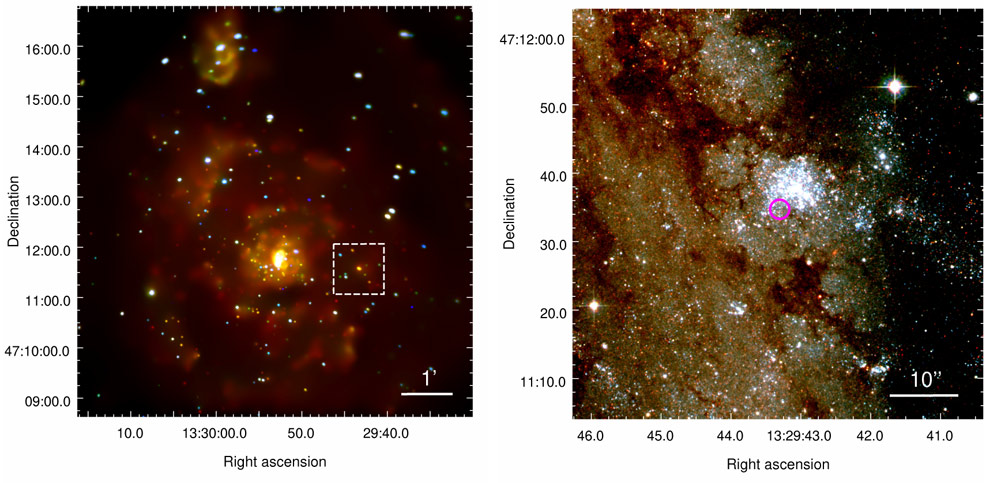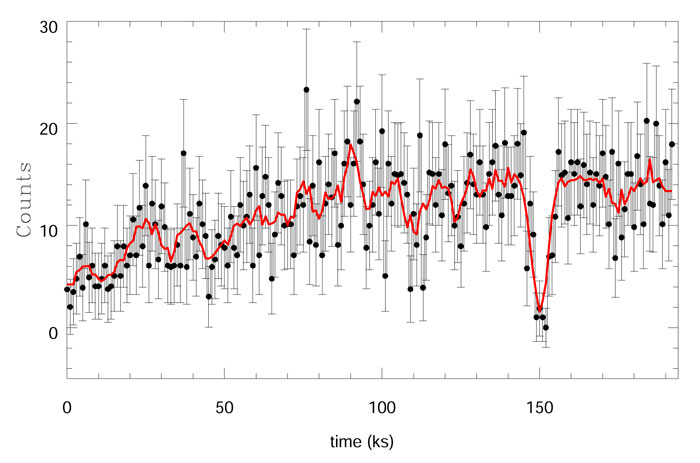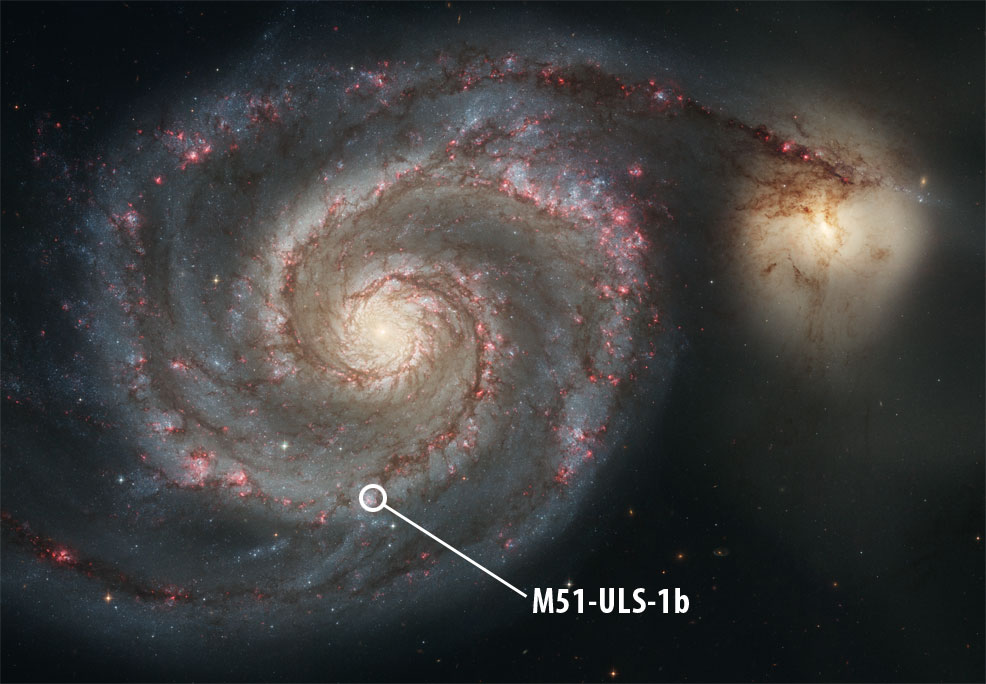
26th September 2020 First candidate extragalactic planetary system identified Astronomers report evidence, for the first time, of an exoplanet in a system outside the Milky Way galaxy.
A team at the Harvard-Smithsonian Center for Astrophysics in Massachusetts, USA, reports finding a new planet in the Whirlpool Galaxy (M51a). While most of the exoplanets discovered in recent years are within a few thousand light years of Earth – with a few outliers in more distant parts of the Milky Way – this latest discovery is located a staggering 23 million light years away. In other words, between 115 and 135 times the distance from one edge of our galaxy to the other, based on recent estimates that put our Milky Way's diameter at 170 to 200,000 light years. If confirmed, it would be the most distant world ever detected orbiting another star. In this case, the system is actually a binary – consisting of a stellar remnant (either a neutron star or black hole) and a B-type supergiant (very large and hot stars that glow blue-white). The researchers, led by Rosanne Di Stefano, analysed data from 2,624 observations made by the ultra-sensitive Chandra space telescope. They observed the eclipsing of a bright X-ray source (XRS) in the Whirlpool Galaxy. Its brightness had caught their attention and proved to be the stellar remnant in the process of consuming its much larger companion. This huge X-ray source (a million times brighter than the output of our Sun) provided a rare opportunity to observe a planetary transit at tens of millions of light years distance that lasted for about three hours. The dip in signal as the planet passed in front of the binary pair is clearly seen in the graph below.
Background-subtracted X-ray light curves defined by data points from Chandra. Credit: Di Stefano, et al.
Based on this, and other data, Di Stefano and her team estimate that M51-ULS-1b – the planet's current designation – is probably slightly smaller than Saturn and orbits at a distance of perhaps 10 AU (ten times Earth's distance from the Sun). They have ruled out the possibility of another star blocking the X-rays, noting that the binary system is too young for that to happen. They also ruled out the possibility of material being pulled into the source of the emissions as a reason for the dimming, as the light characteristics do not match this. All of the light frequencies dimmed and reappeared at the same time, suggesting an eclipse: "It is approximately symmetric, and has a shape typical of transits in which the source and transiting object have comparable size," they say. "X-ray transits can now be used to discover more planets in external galaxies and also planets orbiting XRSs inside the Milky Way," the authors conclude in their paper that is freely available on arXiv. The team analysed just a portion of the X-ray data from Chandra to find this new planet candidate and expect more discoveries to emerge: "The archives contain enough data to conduct surveys comparable to ours more than ten times over," they explain. "We therefore anticipate the discovery of more than a dozen additional extragalactic candidate planets in wide orbits." However, repeating this brief observation of M51-ULS-1b and obtaining more definitive proof could take a long time. Associate Professor at Leiden Observatory in the Netherlands, Matthew Kenworthy, who was not involved in the study, explains: "It's sticky that there's only one transit. The gold standard is three transits equally spaced from one another, because then you know it repeats. But if it's more than a few AU out, then it's going to be decades before it comes around and causes a transit again."
Comments »
If you enjoyed this article, please consider sharing it:
|









